#radiata quotes
Text
I didn't have time for children's games. I was too busy studying fencing and etiquette… Things that would be useful in the future. Things that would make me a better knight.
Ridley Silverlake
7 notes
·
View notes
Text
aphmau is very.... embrace the carnage, consume your idols, bite the hand that beats you.
and by that i mean, Avra is very--
#pinterest quotes my beloved#curl up in my warm embrace as i tighten my grip around you necks and hold you firmly as you struggle#as your fists beat against my unrelenting arms#as you struggle and fight to live. to retain what once made you special. but you are only decoration to me. I will rip from your body what#must and twist the remaining flesh into a display of a character so vague and forever-changing that you may not rest even as you decay. you#flesh will rot and i will continue to mold it into whatever i please#aphmau#aphverse#rewrite#aphblr#minecraft diaries#mcd#mystreet#ranthredo#Lycoris Radiata/Ranthredo
19 notes
·
View notes
Text
Although these behaviors undoubtedly have an affectionate or "pleasurable" tactile component as well as a sexual dimension, they have also been characterized by some scientists as "greetings" interactions, and it is thought that they may serve to negotiate and solidify cooperation between males as well.

"Biological Exuberance: Animal Homosexuality and Natural Diversity" - Bruce Bagemihl
#book quotes#biological exuberance#bruce bagemihl#nonfiction#affectionate#pleasurable#tactile#greetings#negotiation#scientists#interactions#bonnet macaque#macaca radiata#diddling
0 notes
Text
What do we know about Joris le Sans-Pouvoir (Joris the Powerless)?
Aka, addressing the "cancelled Nintendo DS game"-shaped elephant in the room.


While this blog has gone deep into the show and character dissections, I think it would be remiss to proceed without addressing the elephant in the room — the game, the myth, the legend, the 2007-2009ish cancelled game Joris le Sans-Pouvoir.
There isn't a lot that is known about it, and all the data in this post comes from two developers.
The only videos of it we have available are uhhh......,

...Please say "Thanks Ronik!" for this video in particular.
I spent hours trying to convert these two SWF animation video files, — which demonstrate how the game was supposed to look, — to something actually viewable. There were many issues, with at least seven different programs.
I suffered for crepinjurgenology studies, but I did it.
Instead of recounting the story in my own words and omitting anything on accident, I will simply present to you, what the portfolios of two different developers say (these two pages are the source of all the images, gifs, and gameplay):
Joris Le sans-Pouvoir is the main character from a feature film Ankama due in 2013. It’s a new character IP situated in the DOFUS universe. I had the chance to work on a platform game prototype that was all about delving into of the character’s backstory.
We wrote a lot of background and had a lot of fun designing and developping a cute and quirky platformer with a hint of metroidvania elements and a dash of Grow gameplay elements in-between levels.
It also was a great opportunity to work with Jono Takeshi-san of Radiata Stories fame who worked with me on the art direction. (SOURCE)
Joris was the first Nintendo DS project developed at Ankama (in partnership with Magic Pockets). I began working on the project as narrative game designer, then took on the role of Lead Designer and Project Manager.
Game design on this project involved boss fight, level design, minigame design, UI… I also designed an original collecting system where collectible items were used in a minigame inspired by the “Grow” series.
The developpement has been put on hold to match the release of the animated movie with the same character (scheduled in 2013). (SOURCE)


Neither the movie nor the game, survived their development, due to circumstances. (shorthand for: I have no idea what happened, man. Maybe one day I'll write a post about the history of the movie, and truly open that can of worms, but god, not right now. I don't want to spend more time on this.)
Eventually, The Wakfu film turned into three OVAs instead, and the Dofus film changed its plot a bunch of times, and became Livre 1 : Julith.
...For some reason, in some version of it, Joris had a tail. Yeah, I don't know what that's about either. Cool clothes, though!
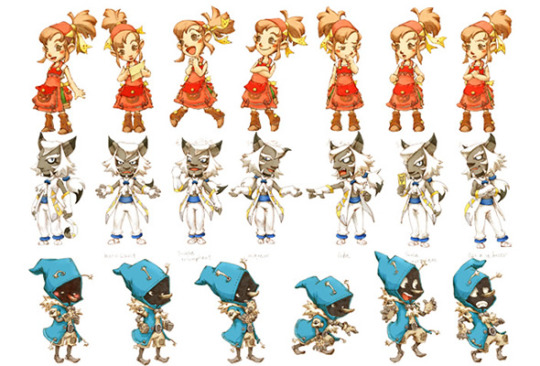
We don't know anything about its plot, and unlike cancelled projects Dofus Donjons and Welsh et Shedar (which was cancelled for years, until its recent resurrection), the lore of this game carries no relevancy in modern canon.

The name, Joris the Powerless, as well as the log-centric gameplay, both seem to reference the early concept that Joris had log-based powers, — and that without his "magic wand," he couldn't do much.
(Joris and his weird fucking "magic wand" were, in turn, borne out of the idea of a warrior who had a woman's voice. Which makes me chuckle.)
(The following quotes are machine-translated and may contain errors)

(SOURCE)
This is, by the way, the reason why I personally headcanon Joris to be really bad at huppermagic. So bad that he dropped out of the Huppermage Academy, and almost never uses magic in combat. It's a homage to his original idea.
(Yes, there is an actual reason why I headcanon Joris to be godawful at magic, besides just projecting my neurodivergencies onto him.)
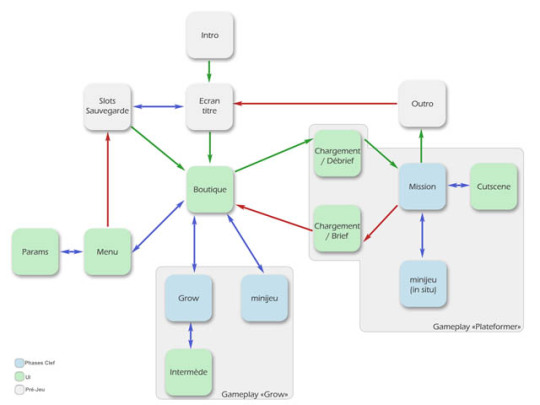

I suppose that, even at this time, Joris was meant to be a store owner:
The gameplay loop involves going from boutique, to missions, and so on, while those two pieces of concept art involve the said boutique section, and show a female character saying «Pas mal, boss !».

In my opinion, it might be this character. Proto-Simone, perhaps?
Since the store seems to be the centerpiece, and the Grow-style minigames involved collectibles, I would assume that the plot involved Joris going around and finding artifacts for the store. That would also explain the concept art gifs of him adventuring.
(Though, the adventuring would probably just be the inciting incident/a vehicle for plot development. Nintendo DS games loved using the jobs characters did for that purpose.)
This is the extent of what I can surmise about the plot.
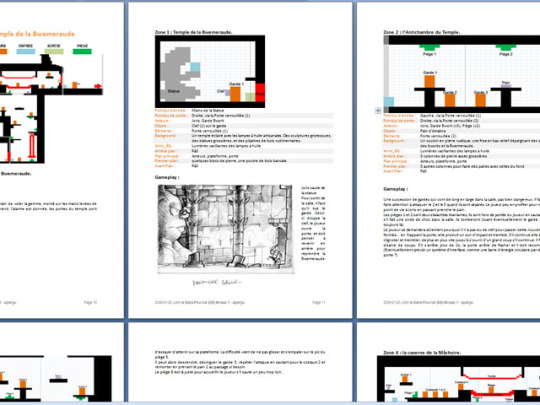

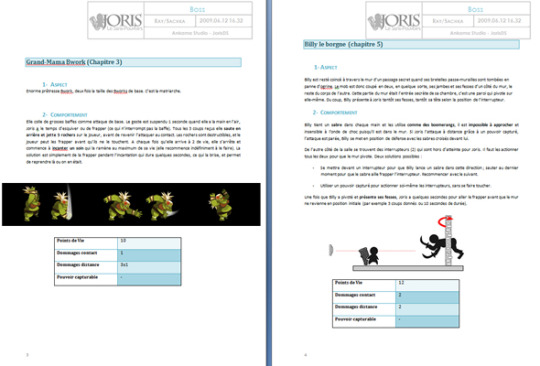
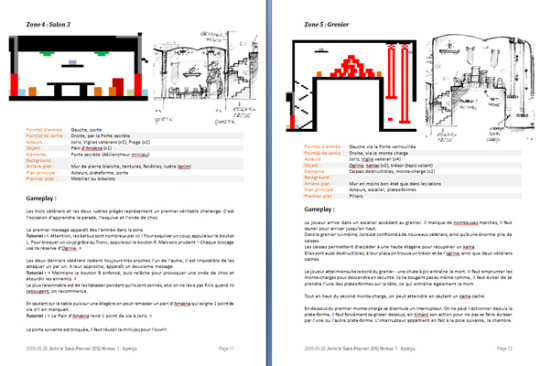
The developer portfolios also included these example documents, but the image quality is too bad for me to make sense of or upscale. I am including them here solely for some French people who are very good at reading blurry text. (If you learn anything, let me know, okay?)
Overall, my verdict is that this game's cancellation was both a blessing (Joris without Kerubim and Atcham is like tea without water and a cup. How am I meant to drink leaves? Are you stupid? Why are you giving me leaves with nothing?) and a curse (THEY CANCELLED A GAME ABOUT MY BLUE-COLORED YOINKY SPLOINKY (who has a THIN, GRABBABLE WAIST)????? FUCK!)
Hope this was a fun read!

#ro liveblogs dofus#joris jurgen#wakfu#dofus#dsgame#<this one is for my pinned organization post's sake#anyway this post has fucked me. and my wife. and i don't even have a wife. my spine hurts my eyes hurt my hands hurt.#i want to do unspeakable things to that blue little man for what he put me through during the writing of this post.#please dont ask me to write about the other nintendo ds games ankama cancelled. they don't have joris so i don't care
55 notes
·
View notes
Text
Crossover Scene Breaks
Paid patreons got this almost a week ago, and it opened to everyone about four days ago. I meant to have it post here in tumblr at that time, but this week has been the absolute SHITTIEST, so that did not happen. Y'all are getting it now, instead. (The one following this, of HP scene breaks, will be queued and should post at the same time as the version on patreon goes public; paying patreons have access to it now.)
All of these are actually crossovers with Harry Potter, because I spent so long in that fandom.
As per previous scene break posts, these were created because I wanted fun scene breaks that were screen reader-friendly at AO3. The images on AO3 are smaller than the versions shared here—I like the larger versions that let you see a bit better the specifics that aren't always visible in the smaller versions—and due to the coding I use, they only exist when you have creator's style on, and cannot be viewed as an image.

Harry Potter/Doctor Who series got a silhouette of Hogwarts, outlined in purple, with a small TARDIS flying in front, and the text HP/DW in the HP font. The castle silhouette was actually pulled for Abandon/Reclaim, and then I just ended up using it for standard HP ship breaks, so you'll be seeing it a lot when the HP set drop.

HP/Torchwood, for my one fic in the Harry/Doctor series that more focussed on Harry being a member of Torchwood's team, which is basically the above break, but with a brighter outline on the castle silhouette (because I apparently changed it between versions; may or may not go in and match them up at some point) with the Torchwood T made up of hexagons at the bottom right.

For my HP/Radiata Stories fic, since it takes place entirely in the RS world, I went ahead and just used the break from the game's title logo, which is a dagger in the centre, pointing down, and a stylised line that looks a bit like a royal sceptre mirrored to either side. Recoloured gold with a purple outline. (I think there was also a non-crossover RS fic that I used this as a scene break for? But don't quote me on that.)

This is the break I decided to use for Fayth, which is HP/FF10, with Harry and some of his friends having become fayth and surviving to the Final Fantasy world/time. Background is that fayth are sealed into crystals, which break when the fayth is 'gone'. Harry has somehow been returned to the world as a living human, and his aeon was Phoenix, so I went with a cracked foreground with Phoenix in the background.


For my other HP/FF10 crossover, Twin Blades, I decided to recreate a scene from the opening AMV of the game, where you see Tidus' sword, Yuna's staff, and Wakka's ball all together on a hill while they rest at the entrance to Zanarkand. Except, I added Lulu's moogle plushie and then two katanas, as Harry's weapons. (Hence the title.) I did try a version with everyone's weapons, but it was...way too busy. So I cut back a bit, but kept Lulu because I adore her and, also, it's fucking adorable.
And then, because I have no self-control, I made an alternate version, using their Celestial Weapons, and two alternate katanas for Harry.
When I originally shared these on Patreon, I hadn't yet added the breaks to the fic, so I wasn't certain how well they'd work—I since have and ended up generally liking them, even on mobile—so I also made what I feel, in retrospect, was a kinda dumb go of two katanas pointed outward and vampire teeth in the centre, to use instead, as below:

I'm quite glad to say that one has been retired, unused, lol
#Bats creates fanfic line breaks#fandom:harry potter#fandom:doctor who#fandom:torchwood#fandom:final fantasy 10#fandom:radiata stories
4 notes
·
View notes
Text
Growing foxtial millet, QMYS Section 3, Part 1
Continuing the Qimin yaoshu齊民要術 (“Essential Techniques for the Common People) by Jia Sixie (fl. c. 540). Advice for growing foxtail millet. Due to the length of this section, the translation will be divided into several posts. This post covers the introductionary dictionary definitions and Jia Sixie's own advice. Subsequent posts will cover the extensive quotations from earlier works.
[Translator's preface]
After opening the book with two general sections on tilling the fields and selecting seed grain, sections 3-54 cover the cultivation of specific plants (field crops, vegetables, fruit- and timber-trees, dye plants). The first, and lengthiest, of these is dedicated to the foxtail millet (Setaria italica). Known under many names, in Jia Sixie's home region it was often simply referred to as gu穀, “grain”. I suppose you could draw parallel to calling maize “corn” in English. Foxtail millet was first domesticated in North China during the Neolithic and remained the main staple crop there during the Early Medieval North China, . As such, by the time QMYS was written, Jia Sixie could draw on several millennia of experience with foxtail millet farming.


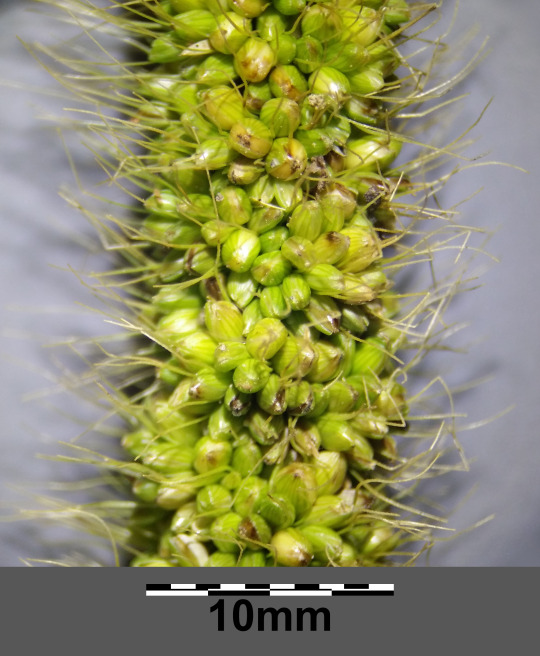
[Other plants mentioned]
Certain other plants are mentioned more incidental in this section.
Plants more or less suited to precede foxtail millet in a crop rotation system:
Mung beans or green gram (Vigna radiata), lüdou緑豆 (lit. "green beans"), used as green manure in crop rotation with millet.

Adzuki beans (Vigna angularis), xiaodou小豆 (lit. "small beans") served a similar function.
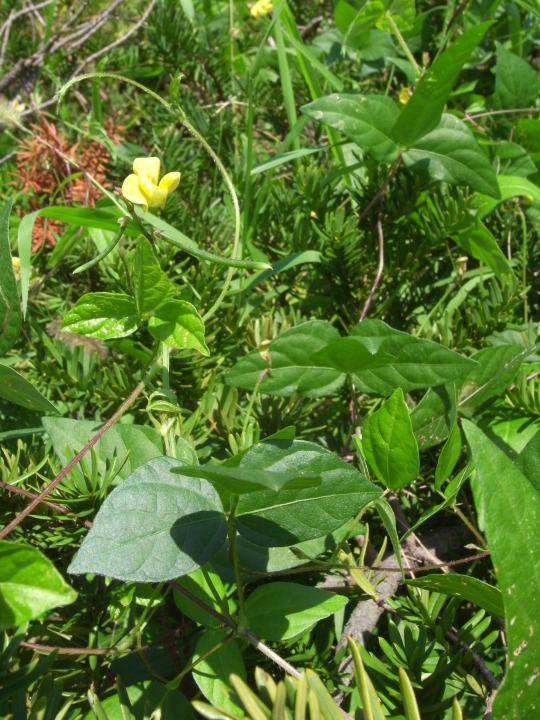
Hemp (Cannabis sativa), ma麻, grown both for textiles and oil

Broomcorn millet (Panicum miliaceum), shu黍, popular for brewing millet beer

Sesame (Sesamum indicum), huma胡麻 (lit. “foreign hemp”), considered the best oilseed crop

Turnip (Brassica rapa var. rapa),wujin蕪菁, leaves and roots are edible, and the seeds can be pressed for oil.

Soybean (Glycine max) dadou大豆 (lit. “large beans”), used as fodder or famine crop, but also fermented into sauces, etc.
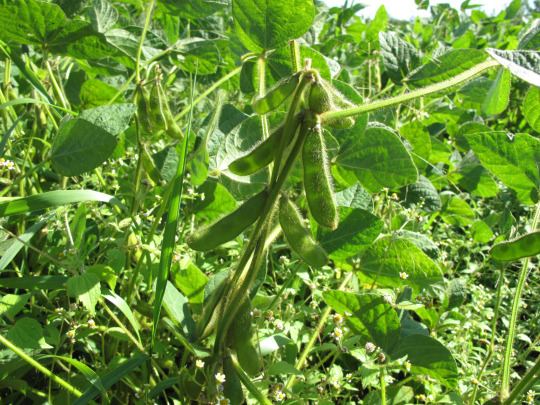
Gua底 is a general term for gourds and melons
Trees whose leaves and flowers can be used to predict the best time for sowing foxtail millet:
Beiyang菩楊 appear to refer to some kind of willow (Salix) or poplar (Populus)

Peach (Prunus persica), tao 桃

Jujube (Ziziphus jujube), zao棗
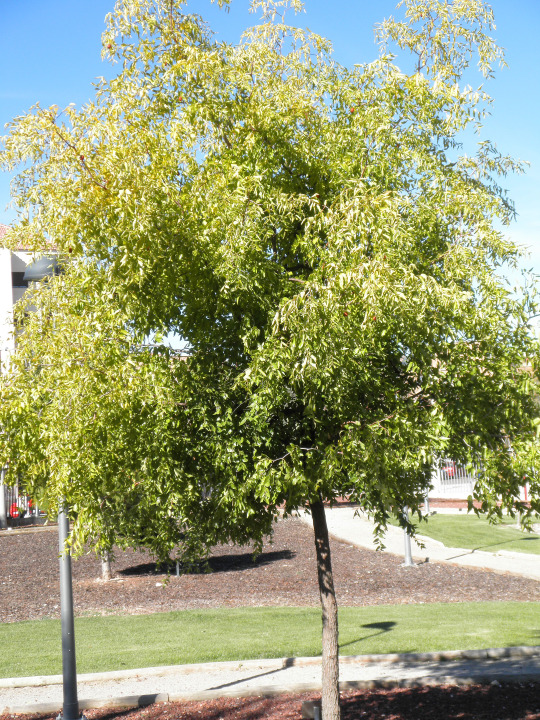
Mulberry (Morus alba), sang桑

[Tools]
The illustrations below are taken from Wang Zhen's王禎 (1271-1333) Nongshu農書, who of course wrote several centuries after Jia Shixie. While many tools were essentially timeless and in continuous use up to the modern age, developments did happen, and also terminology could change.
The preferred tool for sowing was the seed drill, lou耬
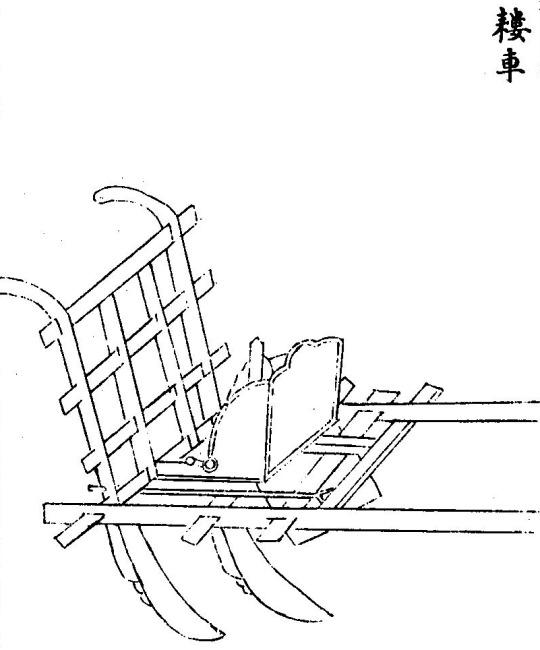
(Wang Zhen's louche耬車).
The “beater”, ta撻, (for a lack of a better translation) was pulled over the furrows after sowing to compact them. Wang Zhen describes this tool as a bunch of branches weighed down by stones.
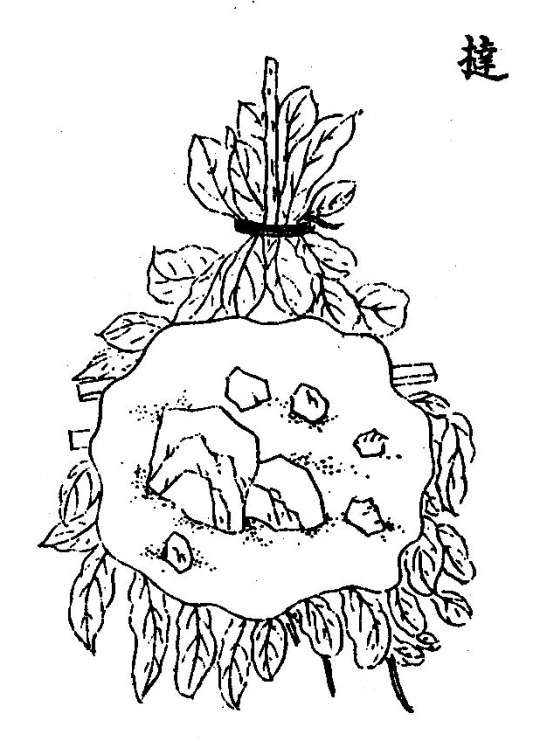
The arrowhead hoe, zuchuo鏃鋤 was a small, pointed hoe. According to Wang Zhen, arrowhead hoeing was one of four methods for hoeing with the youchu耰鋤.
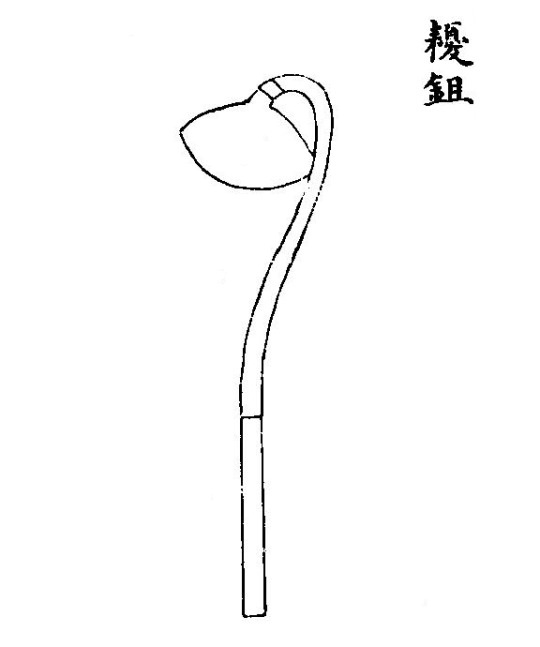
QMYS is the oldest text to refer to the iron-tine rake, tiechi loucou鐵齒𨫒楱

QMYS quite often refer to the spear-harrow, feng鋒. Wang Zhen notes that by his time it was no longer in use, his description of it as a cross between a plough and a spade may therefore not be very accurate.

The sickle, yi刈, was the main tool for reaping field crops.
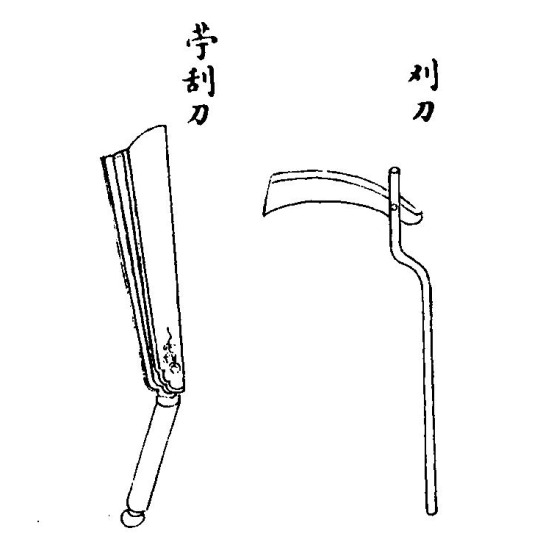
(Wang Zhen's yidao刈刀)
[Books quoted by QMYS in Section 3, in order of appearance]
The Erya爾雅 (“Approaching the Correct”) is the oldest surviving Chinese glossary. Modern scholarship dates the book to the late Warring States and/or early Western Han periods. It is quoted numerous times in QMYS. This is the second QMYS section to quote from the Erya. The last previous was Section 1 (“Tilling the Fields”).
The Shuowen 說文 (“Explaining Graphs”) by Xu Shen許慎 (c. 58 – c. 147) analyses the composition and reasoning behind the different characters. It is quoted numerous times in QMYS. This is the second QMYS section to quote from the Shuowen. The last previous was Section 1 (“Tilling the Fields”).
The Guangzhi廣志 (“Wide Treatise”) by Guo Yigong郭義恭 (Western Jin) is now lost, but it is quoted numerous times in QMYS and other books. This is the first QMYS section to quote from the Guangzhi.
Guo Pu郭璞(276 – 324) was a Daoist wizard, poet and writer. His surviving writings include the oldest extant commentary on the Erya and a commentary on the Shanhaijing. This is the first QMYS section to quote Guo Pu, from his Erya commentary.
Sun Yan孫炎 lived during Wei and was disciple of Zheng Xuan. He wrote (a now lost) commentary on the Erya where he pioneered the use of the fanqie system to indicate pronunciation. This is the first QMYS section to quote Sun Yan.
Liu Zhang 劉章(200 – 176) was a grandson of the Han founder. According to the Shiji he recited the Gengtian ge 耕田歌 (“Song of Ploughing the Fields”)at a banquet during the regency of Empress Dowager Lü, to show his opposition to the Lü clan's power, and he later became one of the main actors in their downfall.
The Guanzi管子 (“Master Guan”) is a collection of treatises on statecraft traditionally attributed to Guan Zhong管子 (d. 645 BC9), an influential minister in Qi during the Spring and Autumn era. Section 3 contains the third quote from the Guanzi in QMYS, the first two are in the preface (which I have impudently skipped).
[The original text is a mix of large and small characters. I have collected the small text sections together as indented notes within {} brackets.]
[Translation starts here]
Section 3, Growing Foxtail millet
Growing foxtail millet [gu穀]:
{“Grain” gu穀 and “foxtail millet” ji稷 are names for setaria millet [su粟]. Grain is the collective name for the Five Grains, and does not mean setaria millet. However, today people solely consider foxtail millet to be “grain”, and [I] look to the customary name for it, and that is all.}
[For the remainder, gu穀 will be translated as “foxtail millet” in the sections written by Jia Sixie, ji稷 will generally be rendered also as “foxtail millet”, and su粟 as “setaria millet” (or just “foxtail” and “setaria”).]
{The Approaching the Correctsays: “Zi粢 is foxtail millet [ji稷].”}
{The Explaining Graphs says: “Setaria millet [su粟] is the fruit of excellent grain [gu穀].”}
{Guo Yigong's Broad Treatise says: “The names of the kinds are Red Setaria and White Stem, Black-Patterned Sparrow Setaria, Duke Zhang's Mottled, Enclosed Yellow-Iron-green, Dark-green Foxtail, Snow-White Millet – likewise named White Stem, also White-Indigo Short, Bamboo Head-Stem Dark-green, White Wheat-Catching, Stone-Pulling Purest, Earth-black Dog-Paw.”}
{Guo Pu's Annotations to the Approaching the Correct says: “Today in Jiangdong they call foxtail millet zi粢.”}
{Sun Yan says: “Foxtail [ji稷] is setaria [su粟]”}
{Note that the present age's names for setaria, many uses a person's family and courtesy names as the label name. There are likewise those where look and form established the names, and likewise those where what happened to be appropriate became the designation, [I] rely on them then to set them out, and that is all:}
{Vermillion Foxtail, Highland Yellow, Liu Zhuxie, Daomin Yellow, Whittled-Grain Yellow, Sparrow's Regret Yellow, Continued Life Yellow, Hundred Days Grain, Upright Wife Yellow, Unworthy-of-Rice Grain, Slave Child Yellow, Jiazhi Foxtail, Schorced Gold Yellow, Quail's Slipper Iron-green which is also named Wheat's Floor-Fighter: These fourteen types ripen early and endure drought, early ripening avoids insects. The Whittled-Grain Yellow and Unworthy-of-Rice Grain types have a pleasing taste.}
{Now-Fell-off-the-Chariot, Short Horse-Carer, Hundred Flock Sheep, Hanging Snake Red-Tail, Bear-Tiger Yellow, Sparrow's and People's Benefit, Horse Reins, Liu Pig Red, Li Yu Yellow, Amba Grain, Donghai Yellow, Rocky lesuo䮑歲, Dark-green-Stalked Dark-green, Dark Excellent Yellow, South-of-the-Paths Crop, Nook-and-Dike Yellow, Song Ji's Idiocy, Point Out Yellow, Rabbit Foot Dark-green, Kind Sun Yellow, Shifting Wind Red, Single Sunlight Yellow, Mountain Saline, Dundang Yellow: These twenty-four types all have spikes with bristles, endure wind, and avoid harassment from sparrows. The Single Sunlight Yellow type is easy to hull.}
{Precious Pearls Yellow, Popular Gain White, Zhang Lin Yellow, White Salt Foxtail, Thousand Hooks Yellow, Zhang Yi Yellow, Gleaming Tiger Yellow, Chief Slave Red, Reed-Stalk Yellow, Xun Pig Red, Wei Shuang Yellow, White-Stalked Dark-green, Bamboo-Rooted Yellow, Attuned Mother Large-grained millet, Rock-Pile Yellow, Liu Sand-White, Seng Long-lasting Yellow, Red Large-grained Foxtail, Auspicous Swift Yellow, Otter-Tail Dark-green, Continued Potency Yellow, Concave-Straw Yellow, Sun Long-lasting Yellow, Pig-Shit Dark-green, Smoking Yellow, Happy Slave-girl Dark-green, Level Long-life Yellow, Deer Stubble White, Salt for Breaking Baskets, Yellow dianshan, Hilly Place Yellow, Red Ba Large-grained millet, Deer Hoof Yellow, Famished Dog Iron-green, Can-be-Pitied Yellow, Hulled Foxtail, Deer Stubble Dark-green, Aluoluo: These thirty-eight types are the single stems great foxtails? [the received QMYS text is defective at this point]. The White Salt Foxtail and Attuned Mother Large-grained millet types have a pleasing taste. The three Concave-Straw Yellow, Hilly Place Yellow and Pig-Shit Dark-green types are bad tasting. The Yellow dianshan and Happy Slave-girl Dark-green types are easy to hull.}
{Bamboo-Leaf Dark-green and Rocky Yichu, Bamboo-Leaf Dark-green is also named Hu Foxtail, Water Black Foxtail, Swift Mud Dark-green, Charging Heaven Cudgels, Pheasant Chick Dark-green, Owl-Foot Foxtail, Goose-Head Dark-green, Hold-Piles Yellow, Dark-green Hawk-cuckoo: These ten types ripen late and endure floods. If there is a calamity of insects, they are consumed.}
In general there is foxtail which is fully ripened early or late, which sprouts and straw are tall or low, which harvest results are large or small, which natural quality is strong or weak, which hulled grain taste good or bad, which grain results in gains or losses{A}. The conditions of the land can be good or poor{B}, and mountains and marshes differ in what is suitable{C}. Obey Heaven's seasons, and evaluate the land's advantages, then [you] will employ little strength yet achieve success many times. Rely on feelings and go against the Way, [you] will toil and yet get nothing.{D}
{A: Those that ripen early have short sprouts and the harvest is large. Those that ripen late have long sprouts and the harvest is small. Those which strong sprouts are short, and belong to the yellow foxtail. Those which weak sprouts are long, and are dark-green, white, or black. Those with small harvests are good but make losses. Those with large harvests are bad but make gains.}
{B: Good fields are suitable for late types, poor fields are suitable for early types. Good land is not solely suitable for late types, early types are also not harmful. Poor land is suitable for early types, late types will certainly not give successful result.}
{C: For mountain fields, types with strong sprouts, to avoid wind and frost. For marsh fields, types with weak sprouts, to aspire to splendid results.}
{D: Enter a spring to chop wood and climb a mountain to look for fish, and the hand will surely be empty. To face the wind when sprinkling water, or to go against the slope when moving a pellet, these conditions are difficult.}
In general for foxtail fields, mung beans or adzuki beans as the previous crop is the best; hemp, broomcorn millet, and sesame are next; turnip and soy beans are last.
{It is common to see gourds as the previous crop, they are no less than mung beans. Originally they were not discussed, for the moment then keep it in mind.} [This note may be a later addition.]
For 1 mu of good land, use 5 sheng of seeds, and for poor land 3 sheng.{A} Foxtail fields certainly must be changed annually.{B} Those sown in the 2nd Month or the 3rd Month are the early-planted grain. Those sown in the 4th or 5th Month are the late-planted grain. From 2nd Month, First Ten-day, until the hemp and beiyang willow sprout seeds is the best time. 3rd Month, First Ten-day, until the Pure and Clear [qingming] Period and the peach tree first flower is the middle time. 4th Month, First Ten-day until the jujube leaves sprout and the mulberry flowers fall is the worst time. For those which the yearly Way ought to be late, the beginning of the Fifth Month or Sixth Month are also possible.
{A: This is for early-planted foxtail, for late fields increase the number of plants.}
{B: If twice sowing the seeds, the weeds will be many, and the harvest poor.}
In general spring sowing wish to be deep, and ought to be dragged with a heavy “beater”. Summer spring wish to be shallow, and just sprout from itself.
{Spring air is cold, and sprouting is slow. If not dragged with a “beater”, they will set root in hollows, and even if they sprout, they will immediately die. Summer air is hot, and they sprout quickly. [If] dragged with the “beater” and there happens to be rain, [the ground] will surely be hard and dry. Those in the spring that are very moist sometimes also are not necessary to beat. To be certain they want beating, [you] ought necessarily to wait for [the ground] to turn white. Wet beating will cause the ground to be hard and tough is the reason.}
In general when sowing foxtail, after rain is good. If there is a little rain, [you] ought accept the wetness and sow. If there is great rain, wait for the weeds to sprout.{A} During spring, if there is drought, on the land of the autumn tilling [you] might open the mounds and wait for rain.{B} During summer, if there are open mounds, not only will it sweep away and wash out that which does not grow, [but] in addition it and the grassy weeds will set forth together.
{A: [If] there is a little rain and [you] do not accept the wetness, there is nothing to give birth to the stalks sprouting. [If] there is great rain and [you] do not wait for [the ground] to turn white, wet rolling then will cause the sprouts to be frail. If weeds are abundant, to first hoe one time everywhere and afterwards accept sowing then will be good.}
{B: On the spring-tilled, it does not hit the mark.}
In general the fields that want early or late are mixed together.{A} In years that are intercalary, after the solar periods draw close, [you] ought to have late fields. However for the most part [you] want early, early fields yield more than late.{B}
{A: Prepare for what is proper in the Way of the year.}
{B: Early fields are clean and easy to manage. The late ones overgrow with weeds and are difficult to manage. Their harvest, regardless of large or small, follows from is proper for the year, and is not connected to early or late. However, early foxtail have thin husks, the hulled grains are solid and many. Late foxtail have thick husks, the hulled grain are small and empty.}
When the sprouts have grown similar to horse ears, then arrowhead hoe.{A} At places with gaps and holes, hoe and patch them.{B} In general for the Five Grains, only the small hoe is good.{C} For good fields, usually for each chi [foot], keep one hole.{D} For poor land, seek out mounds and tread on them.{E}
{A: The proverb says: “Want to get foxtail, at horse ears the arrowhead.” }
{B: The work done might not be overstated. The profit gained this way is a hundred times.}
{C: The small hoe not only saves strength, the grain is also twice as good. With a large hoe, the grass and their roots will be profuse and thick, a lot of work will be done yet the harvest will grow smaller.}
{D: Liu Zhang's Song of Tilling the Fields says: “Plough deeply and sow thickly, the standing sprouts want to be spread out. For those not of their kind, hoe and get rid of them. The proverb which states: “[When you can] turn around the chariot and reverse the horse, [or] throw away the clothes [and they] do not fall down, both give ten shi when harvested” tells that harvest for [fields that are] very sparse or very thick are all equal and even.}
{E: Not tilling is the reason.}
When the sprouts spring forth from the mounds, hoe deeply. When hoeing, do not get bored with the frequency. Once done, start again. [You] must not stop though there is no grass.{A} Spring hoeing is to lift up the earth, and summer to remove grass. For that reason, spring hoeing is not done when facing wetness. By the 6th Month and after, even if wet, in this case is not disliked.{B}
{A: Hoe not just to remove the grass, then the land will ripen and the fruit will be many, the chaff will be weak, and the hulled grain will grow. When hoeing is done ten times everywhere, [you] will then obtain “Eight [parts of ten?] Hulled grain”.}
{B: During spring, as the sprouts are just then slight and their shade are not yet covering the ground, if wet hoeing, the ground will become hard. During summer, the sprouts cast a solid shade and the ground does not see the sun. For that reason, even if wet, in this case there is no harm. Master Guan says: “To make a state, cause the farmers to till when cold and weed [yun芸] when hot.” To weed is to remove grass.}
When the sprouts have sprung from the mounds, each time [you] have gone through rain, in the time [the ground] turns white, immediately use the iron-tine rake across and athwart to rake and harrow them.
{Method for raking: Make a person sit down on top, and frequently use their hands to tear off and get rid of grass, if grass block up the tines it will harm the sprouts. Like this [you] will make the ground ripe and soft, easy to hoe and save strength. When hitting the spear-harrow, stop.}
When the sprouts are one chi high, spear-harrow them.{A} Tillage is not about not embedding the root sprouts deeply, it kills the grass and increase the results, however it will make the ground hard and tough, lacking in moisture and difficult to till. Hoe five times everywhere or more, and it will not be bothersome to till.{B}
{A: Three times everywhere is always good.}
{B: When for sure [you] want to till, after you have reaped the foxtail, if you promptly spear-harrow below the roots to burst them up, it will be soft and moist, and easy to till.}
In general when sowing, [you] want the ox to move slow and leisurely. The sower makes hurried steps to tread the mound base with his feet.
{If the ox is slow, the seeds will be evenly placed. If trod with the feet, the sprouts will thrive. When the footsteps connect with each other, it is possible to not bother with beating.}
When ripe, reap quickly. When dry, store quickly.
{If reaped early, the sickle-use will be excessive. If reaped late, the spikes will break. If there is wind, the harvest will diminish. If stored wet, the stalks will rot. If stored late, there is loss and waste. If continuous rain, they will grow ears.}
In general for the Five Grains, for the most part those sown in the first ten-day will give a full harvest, those in the middle ten-day a middle harvest, and those in the last ten-day a lesser harvest.
7 notes
·
View notes
Text
hi!! i dont really have a name for myself so you can just call me tengu!
im eighteen years old
my favourite flower is Lycoris radiata! (also known as the red spider lily!)
ive had to relearn english for a few years and im more comfortable speaking english so that others are able to understand me (some what-) (my japanese has deteriorated and ive been too lazy to practice it again-)
i post and reblog kny stuff only
i discovered tumblr recently through demon slayer tumblr incorrect quotes pictures! (which means i'll probably post those!)
I LOVE SEKIDO KARAKU AIZETSU AND UROGI SO MUCH!!! AAAAHHH!!
Zohakuten is my little baby boy (HES SO ADORABLE)
i may interact with 18+ accounts so please be mindful of that!!
okay bye bye!! it was nice to meet you all!!

7 notes
·
View notes
Text
THE TAGS LIST

For you and I's convenience, an organized Tags List! SEE THIS POST FOR HOW TO SEARCH FOR TAGS ON MY BLOG.

MUN POSTS
&& ooc / your local queen of brainrot
&& rose plays hi3 / ellie herrscher ballista go
&& rose plays gi / this is my third playing gi tag jfc
&& rose plays hsr / screams in kafka simp
&& rose plays lc / im a sadomasochist confirmed
&& rose plays lor / screams in angela simp
&& rose plays lcb / 12 idiots and 1 simp
&& rose plays bg3 / who knew cats can get you so far
&& rose plays ptn / sapphic fever dream time baby
&& rose plays pgr / my impulses won and now we're here
&& aetherose pinned post / do not reblog; non-rp blogs dni
Spoiler tags to block: hi3 spoilers, genshin spoilers, hsr spoilers, lobcorp spoilers, ruina spoilers, limbus spoilers, bg3 spoilers, ptn spoilers, pgr spoilers

GENERAL
&& ic / give all to the present for the sake of the future
&& thread / the hearts that can bend shall never be broken
&& commentary / live to the point of tears
&& open starter / freedom is nothing but a chance to be better
&& asks / seeking what is true is not seeking what is desirable
&& drabbles / a nostalgia for innocence
&& memes / there is not love of life without despair about life
&& dash games / there is scarcely any passion without struggle
&& crack / oh lord save us from ourselves
&& incorrect quotes / just a rose tradition!
&& headcanons / man is always prey to his truths
&& oc lore / the gentle indifference of the world
&& gallery / at the heart of all beauty lies something inhuman
&& edits / the glimpse of an eternity stretched across time
&& mun art / rose can draw sometimes
&& aesthetic / an appeal to the essence of being
&& musing / can you see the meaning inside yourself
&& music / where words fail song speaks
&& announcement / gather around rose’s garden
&& patch notes / just a rundown of the updates to the blog!
&& psa / you should probably read this
&& starter call / where there is no hope it is on us to invent it
&& inbox call / a day will come when revolutions will have need of beauty
&& promo / a beautiful twilight that enhances everything
&& self-promo / heyo its me rose
&& discord chronicles / hidden beneath the surface lies treasures
&& signal boost / a little can go a long way
&& misc / rose doesnt know where to put this
&& munday / stuff about rose!
&& saved / rose’s most beloveds
&& wishlist / rose’s hopes
&& queue / rose remembered she can queue stuff

MUSES
&& c. elysia / miss pink elf
&& c. aponia / disciplinary perdition
&& c. mobius / infinite ouroboros
&& c. fu hua / taixuan impression
&& c. dr. mei / ward of humanity’s flame
&& c. seele / swallowtail phantasm
&& c. veliona / starchasm nyx
&& c. theresa / valkyrie pledge
&& c. senti / herrscher of sentience
&& c. binah / degraded arbiter
&& c. faust / representation emitter
&& c. rodion / what is cast
&& c. furina / endless solo of solitude
&& c. focalors / lady of all waters
&& c. columbina / the damselette
&& c. sandrone / the marionette
&& c. la signora / the fair lady
&& c. lumine / the abyss princess
&& c. klee / fleeing sunlight
&& c. raiden ei / plane of euthymia
&& c. raiden norika / guardian of eternity
&& c. zero / song of the end
&& c. kafka / twilight trill
&& c. black swan / loom of fate’s caprice
&& c. hsr bronya / windrider bullet
&& c. hsr seele / butterfly flurry
&& c. layla / silent nightingale
&& c. lumia / niveous eminence
&& c. rosemary / nocturne illusion
&& c. pamela / paradoxical heart
&& c. arabella / bloodied blossoms
&& c. lynn / starlight’s embrace
&& c. gabriella / tempestuous waves
&& c. daphne / flowing gales
&& c. calista / transcendent damnation
&& c. radiata / crimson lily
&& c. sylve / tempest archer
&& c. raven / lunar songstress
&& c. nimue / ethereal sorceress
&& c. luna / apocalyptic moonlight
&& c. vera / redheaded death
&& c. alpha / crimson abyss
&& c. qu / kowloong monarch
&& c. nanami / searing heart
&& c. selena / tempest finale
&& c. angela / star of freedom
&& c. iori / the purple tear
&& c. zena / arbiter of the head
&& c. eden / golden diva
&& c. bronya / wolf’s dawn
&& c. skirk / girl of another world
&& c. clorinde / candlebearer shadowhunter
&& c. kokomi / pearl of wisdom
&& c. jingliu / transcendent flash
&& c. robin / caged songbird
&& c. one / song of salvation
&& c. two / song of love
&& c. three / song of obsession
&& c. four / song of envy
&& c. accord / recorder android
&& c. popola / singer of the ancients
&& c. devola / singer of the ancients
&& c. shadowheart / daughter of darkness

VERSES
&& v. crossover / and we come together despite all odds
&& v. unspecified / dance in a world of endless possibilities
&& v. genshin / step into a vast magical world of adventure
&& v. hi3 / for all that’s beautiful in the world
&& v. hsr / may this journey lead us starward
&& v. lobcorp / face the fear; build the future
&& v. lor / book; librarian; star; and city
&& v. lcb / face the sin; save the ego
&& v. projmoon / hominem te esse memento
&& v. stp / you are on a path in the woods
&& v. bg3 / to become more than what we were made to be
&& v. d&d / our adventure begins here
&& v. fe3h / promise me you won't forget me
&& v. ph / there is no black and white; only our will
&& v. pgr / reclaim the world for humanity
&& v. dod3 / the songs of oblivion
&& v. modern / a world not far off from our own
&& v. ce / the ethereal abyss
&& v. ce: rein / reborn into peace
&& v. tenebra / repetition of history
&& v. herrscher of death / birthed from broken serenity
&& v. older layla / the nightingale’s metamorphosis
&& v. younger layla / from the embers
&& v. little layla / still-burning flame
&& v. white witch / the monster they made
&& v. star of the head / flickering lights in an empty city
&& v. shining star / reignition of lost light
&& v. fallen star / all-consuming darkness
&& v. chosen of bhaal / the embrace of her rancid blood
&& v. young nimue / unknowing accursed daughter

BONDS
&& complicated found fam / butterflies daffodils and birds
&& layla + crystal / the sweetest devotion i’ve ever known
&& calista x aelia / light up the night sky together

0 notes
Text
SIMMONS BEAUTYREST SIGNATURE IV – 5 STAR HOTEL QUEEN BED ENSEMBLE
5 Star Hotel Bed BeautyRest Signature IV Queen Ensemble
5 Year Warranty
Conforms to Australian/NZ Standards
30 cm Single Sided (non flip) Euro Pillowtop Mattress
Fire Retardant Luxury Knit Fabric (Top Panel) BS7177
Fire Retardant Luxury Fabric Contrasting Border BS7177
Climatex Top Quilt Panel using High Loft Fibre & Dunlop DreamFoam®
Australian made Premium Grade Marathon® Medium Plush Comfort Layers
Advanced Design 3 Zone Micro Pocketed Coil Spring
Comfort Edge encased Spring Unit –Premium Grade Australian made Foam
Premium Felt Pad Spring Insulation
Specially Designed King Zip Model eliminates feel of join & zipper
Mattress tolerances – +/- 1.5 cm
Prestige 10 Rail Full Floating Base with Recessed Fittings
Kiln Dried Australian Pinus Radiata Timber – Environmentally Friendly, Renewable
23 cm Base Height (excluding fittings) with Non-Slip Fabric
Upholstered in Matching Fire Retardant Commercial Fabric
Feet/Castor Options- 50 mm/100 mm/135 mm Height (Standard Fittings 100 mm Leg & Castor)
Preferred bedding choice for major 5 Star Hotels Australia wide.
IMPORTANT ; You must allow up to 2-4 weeks for delivery on these beds as they are custom made to order.
You will need to make arrangements to be home on the delivery day & to have someone available to help with any stairs.
Delivery to Regional areas will be costed on an individual location basis, if freight is unavailable once you have added to the cart please contact me for a quote.
https://www.hotelathome.com.au/product/simmons-beautyrest-signature-iii-5-star-hotel-queen-bed-ensemble/
0 notes
Photo



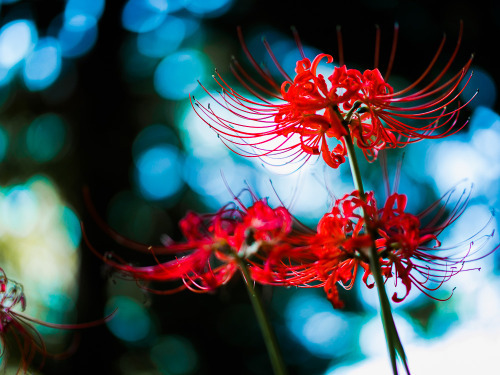
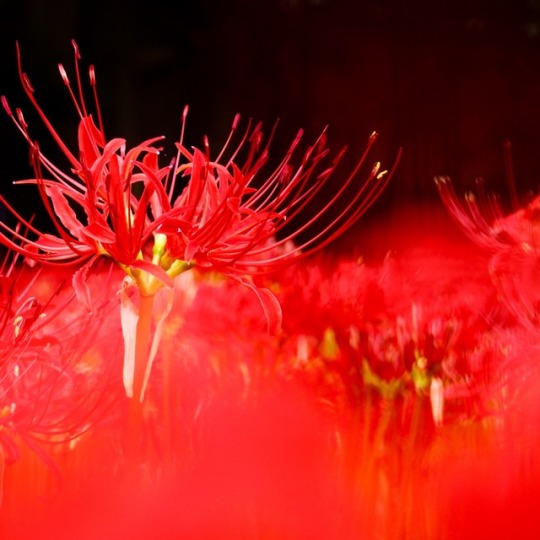
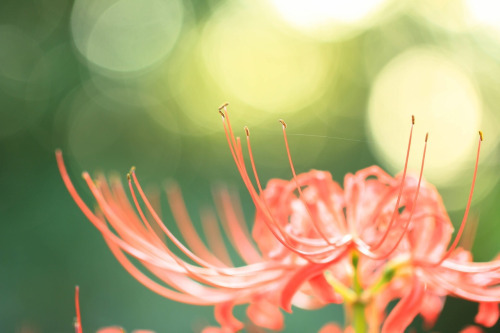
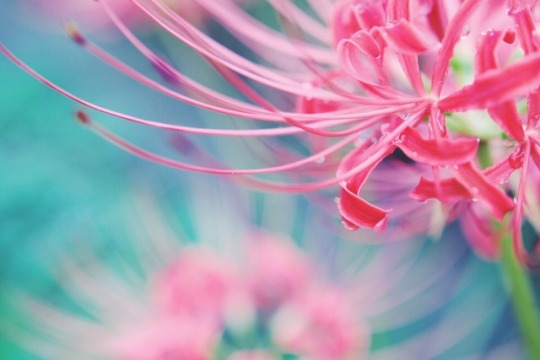


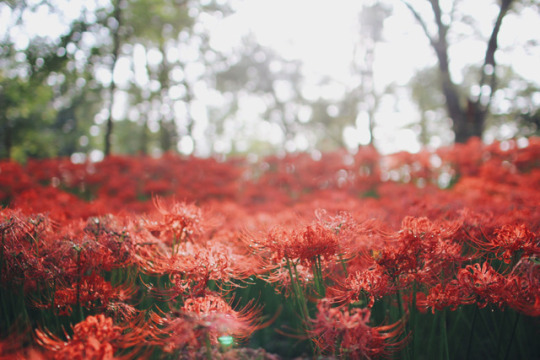
“Bỉ ngạn hoa, khai nhất thiên niên, lạc nhất thiên niên, hoa diệp vĩnh bất tương kiến, tình bất vi nhân quả, duyên chú định sanh tử.”
Bỉ ngạn hoa, một ngàn năm hoa nở, một ngàn năm hoa tàn, hoa lá vĩnh viễn không gặp nhau, tình bởi vì nhân quả, sinh tử do duyên định sẵn.
Phật nói có một loài hoa, vô sanh vô tử, vô khổ vô bi, vô dục vô cầu, là thế giới cực lạc quên hết thảy đau khổ.
Có một loại hoa, thoát khỏi tam giới, không thuộc ngũ hành, sinh tại bờ bên kia, không cành không lá, màu đỏ rực rỡ hoa lệ, Phật nói đó là bỉ ngạn hoa.
Khi hoa bỉ ngạn nở, chỉ có một màu lửa đỏ; hoa nở không có lá, có lá không có hoa; tương niệm nhớ mong nhưng không thể gặp nhau, một mình cô độc trên con đường đến bờ bên kia.
Kinh Phật nói, tình là do nhân quả, duyên quyết định sinh tử.
Duyên đã tẫn thì tình cũng hết, có kiếp này chưa chắc có kiếp sau, trả hết nợ một đời, thì không thể dây dưa thêm nữa.
Vì vậy nếu yêu, xin hãy nói yêu thôi, đừng nói yêu mãi mãi…
tuyetvudalau’s wordpress
#hoa bỉ ngạn#blue's collection#Lycoris radiata#Manjusaka#red#color#flower#flower meaning#floral#quote
2K notes
·
View notes
Photo

Fresh from last night. I'm sore but so in love. I do, however, need to work on my core so my pudgy tummy isn't so pudgy.
#personal#picture#me#tattoo#flowers#spider lily#lycoris radiata#quote#choose life unafraid#tat#tatted#ribs
2 notes
·
View notes
Text
I guess we know which donkey is pulling the cart in that family. Yep. And where the donkey leads, the ass has to follow.
Jack Russell
9 notes
·
View notes
Photo

As I said Mikel gave me challenge and today I completed it. I'm presenting 4 Lovecraftian creatures that I have drawn solely based on the description given by Lovecraft which is quoted below. What creature do you think this is? I'm planning on coloring the one with the most likes by next Saturday! “Important discovery. Orrendorf and Watkins, working underground at 9:45 with light, found monstrous barrel-shaped fossil of wholly unknown nature; probably vegetable unless overgrown specimen of unknown marine radiata. Tissue evidently preserved by mineral salts. Tough as leather, but astonishing flexibility retained in places. Marks of broken-off parts at ends and around sides. Six feet end to end, 3.5 feet central diameter, tapering to 1 foot at each end. Like a barrel with five bulging ridges in place of staves. Lateral breakages, as of thinnish stalks, are at equator in middle of these ridges. In furrows between ridges are curious growths. Combs or wings that fold up and spread out like fans. All greatly damaged but one, which gives almost seven-foot wing spread. Arrangement reminds one of certain monsters of primal myth, especially fabled <name> in Necronomicon. These wings seem to be membraneous, stretched on a framework of glandular tubing. Apparent minute orifices in frame tubing at wing tips. Ends of body shrivelled, giving no clue to interior or to what has been broken off there.” #HPLovecraft #xoxombl #Lovecraftian #horror #challenge #monster #creature #HPLHS https://www.instagram.com/p/ByMgXcuH_dO/?igshid=1vrpr0f1hn6b2
1 note
·
View note
Text
Tilling the fields, QMYS, Section 1
The Qimin yaoshu齊民要術 (“Essential Techniques for the Common People) by Jia Sixie (fl. c. 540), is the oldest Chinese agricultural treatise to survive in its entirety. Jia Sixie served as a mid-level official of Eastern Wei,as such the focus is on the dryland farming practices of his home region in modern Shandong rather than the wet rice agriculture of Southern China. The book itself mixes Jia Sixie's own advise and descriptions with quotations from earlier works, many of which are now lost. The QMYS is therefore not just an important source for the author's own times, but for the agricultural writings and practices of the preceding centuries.
Section 1 covers the different aspects of tilling the fields in preparation for cultivation, and contains advise for how to clear new fields, ploughing, harrowing, different soil types, and so on.
(To go straight to the translation, jump to "Section 1, Tilling the Fields")
[Translator's preface]
[The QMYS is not illustrated, but texts of this nature really should come with some visual aides. I have therefore included here some drawings and pictures from later eras. All images from Wikipedia.
[Farming tools]
Han era scholars agreed that China's first plough had been a tool called leisi耒耜, but lacked a clear of concept of how it actually looked like. Later authors simply repeated their statements. The drawing below from Wang Zhen's (1271-1333) Nongshu is therefore at best a reconstruction from literary evidence.

(Leisi耒耜, from Wang Zhen's Nongshu)
The main plough was instead the ox-pulled li犂 frame-plough.

(Li犂, from Wang Zhen's Nongshu)
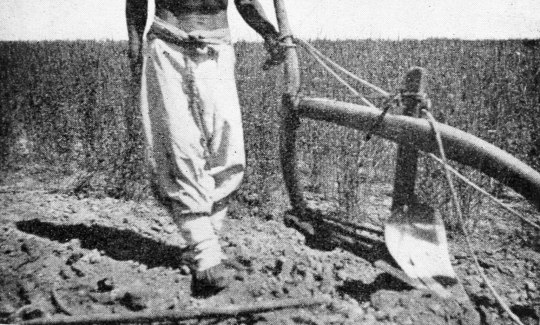
(Shantung plow, from King, 1911, Farmers of forty centuries)
QMYS also refer to the lighter feng鋒 plough.

(Feng鋒, from Wang Zhen's Nongshu)
The QMYS is the oldest Chinese text to refer to the iron-tined harrow, which it refer to as loucou𨫒楱

(Ba耙, from Wang Zhen's Nongshu)
The lao勞 bush-harrow was made by weaving thin sticks around the cross-bars.
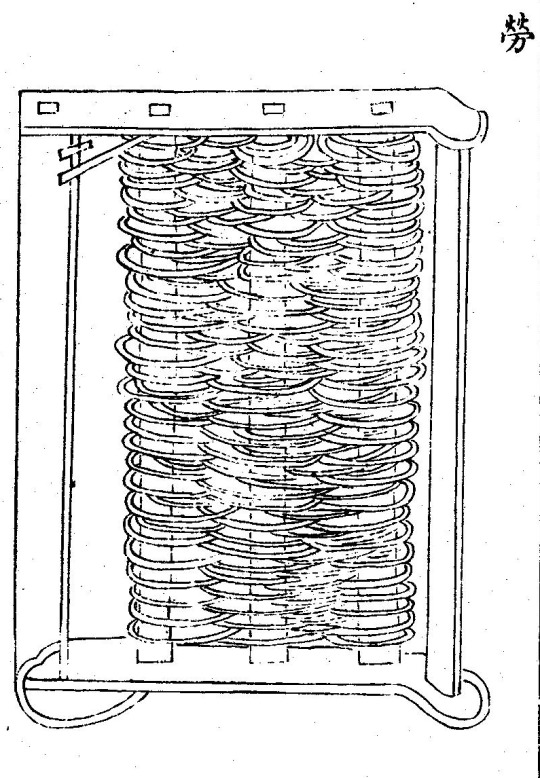
(Lao勞, from Wang Zhen's Nongshu)
The preferred tool for sowing was the seed drill, lou耬
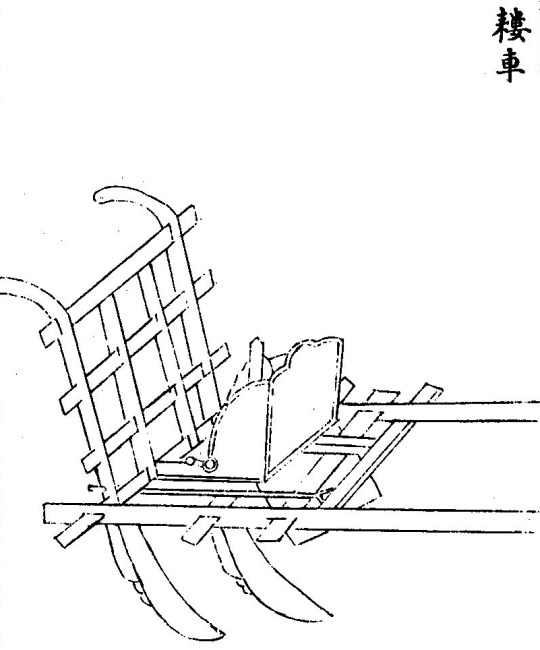
(Louche耬車, from Wang Zhen's Nongshu)
In addition to these ox-drawn tools, there were of course a varity of manual tools in different shapes and sizes, hoes, shovels, etc.

(Youchu耰鋤, from Wang Zhen's Nongshu)

(Nou耨, from Wang Zhen's Nongshu)

(Chan鏟, from Wang Zhen's Nongshu)
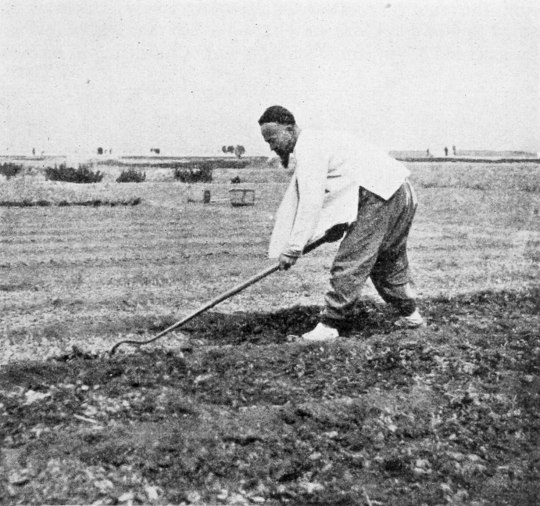
(Method of using the broad, heavy hoe in producing surface mulch, as seen in Shantung, China, from King, 1911, Farmers of forty centuries)
[Crop plants]
Later sections of QMYS treats the cultivation of the individual crops in much larger detail.
Foxtail millet (Setaria italica), gu穀, was the main staple crop.

Broomcorn millet (Panicum miliaceum), shu黍
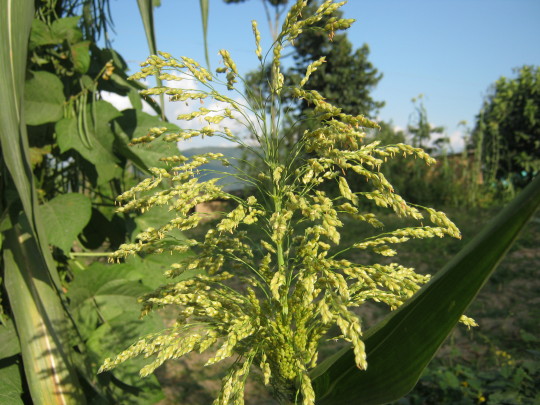
In addition to gu and shu, different varieties of foxtail and broomcorn millet were known under a large number of other names.
Mung beans or green gram (Vigna radiata), lüdou緑豆 (lit. "green beans"), used as green manure in crop rotation with millet

Adzuki beans (Vigna angularis), xiaodou小豆 (lit. "small beans") served a similar function
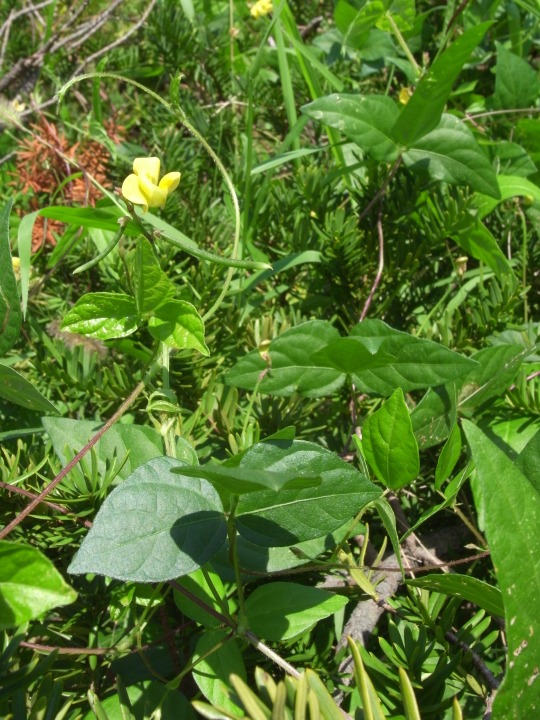
Wheat (Triticum aestivum), mai麥 (same name also used for barley) was primarily a winter crop in ancient China.

[Books quoted by QMYS in Section 1, in order of appearance]
The Zhoushu周書 (“Book of Zhou”), also known as the Yi Zhoushu逸周書, is a Warring States era collection of documents about Western Zhou, but the book has a complicated textual history. It is quoted once in QMYS, in Section 1. The quoted text is not found in the transmitted version.
The Shiben世本 (“Generational Roots”) records the genealogies of mythical rulers, the origin of the clan names, and mythological and historical inventors. Several versions existed, by different authors. The full text now lost, but it is quoted numerous times in other works. It is quoted once in QMYS, in Section 1.
The Lüshi chunqiu呂氏春秋 (“Spring and Autumn of Mister Lü”) is a collection of treatises and essays attributed to the retainers of Lü Buwei, the (in)famous Qin chancellor. It covers a very wide range of topics.
The Erya爾雅 (“Approaching the Correct”) is the oldest surviving Chinese glossary. Modern scholarship dates the book to the late Warring States and/or early Western Han periods. It is quoted numerous times in QMYS.
The Jianwei shiren犍為舍人, the “Retainer from Jianwei”, lived during the reign of Emperor Wu of Han and wrote a commentary on the Erya. The book is now lost. The quote in Section 1 is the first of three in QMYS.
The Zuanwen 纂文 (“Compiled Graphs”) by the Liu-Song scholar and historian He Chengtian何承天 (370 – 447) is now lost. It is quoted once in QMYS, in Section 1.
The Shuowen 說文 (“Explaining Graphs”) by Xu Shen許慎 (c. 58 – c. 147) analyses the composition and reasoning behind the different characters. It is quoted numerous times in QMYS.
The Shiming釋名 (“Analysing Names”) by Liu Xi劉熙 is a glossary in the style of the Erya written c. 200 AD. The quote in Section 1 is the first of three in QMYS.
The Liji 禮記 (“Ritual Records”) is a collection of ritual treatises compiled from older texts during Former Han, it became part of the textual canon as one the Five Classics and also as one the Three Ritual Classics. Its usage in QMYS is restricted to the Yueling chapter.
The Yueling月令 (“Monthly Orders”) chapter of the Liji is a calendrical treatise describing for each of the twelve months the position of the stars and other seasonal markers, important state rituals, and which activities should be undertaken in each month. Its inclusion in the Liji ensured it what read by every person aspiring to an education and it inspired a whole genre of similar texts, such as the Simin yueling. It is extensively quoted in QMYS.
Zheng Xuan鄭玄(127 – 200) was a famous scholar at the end of Han who wrote an influential commentary on the Three Ritual Classics. In QMYS quotations from the Yueling and Zhouguan are usually accompanied by quotes from his annotations.
Mengzi孟子 (“Master Meng”, theLatin Mencius) collects the teachings of the famous Warring States era philosopher Meng Ke (372–289 BC). The quote in Section 1 is the first of three in QMYS.
Wei Wen-hou魏文侯, Marquis Wen of Wei, ruled Wei during the early Warring States era. The single quote in QMYS attributed to him is found in the Huainanzi.
The Book of Miscellanea on Yin and Yang雜陰陽書 was apparently written during the early Han, but is now lost outside the quotations in the QMYS. The quote in Section 1 is the first of eight in QMYS.
Gao You高誘 lived at the end of Han and wrote commentaries on several texts, including the Lüshi chunqiu and the Huainanzi. The quote in Section 1 is the first of eight in QMYS.
The Huainanzi淮南子 (“Masters of Huainan”) is a collection of philosophical treaties compiled during Western Han at the court of Liu An (179 – 122 BC), vassal king of Huainan. It covers a wide range of topics. The quote in Part 9 is the second of nine in QMYS, the first being in the preface (which I have impudently skipped).
The Fan Shengzhi shu氾勝之書 (“Book of Fan Shengzhi”) is the oldest known Chinese agricultural treatise. Fan Shengzhi might originally have been an easterner, but during the early Western Han served as an official in the Guanzhong region. The original book has been lost, but it is extensively quoted in the QMYS, and also by Tang and Song encyclopedias.
Cui Shi崔寔 (d. c. 170) was a Han official and author of multiple works, including the Simin yueling and Zhenglun.
The Simin yueling 四民月令 (“Monthly Orders for the Four People”) is written in the style of the Liji Yueling, detailing each month's agricultural activities at the large estates of late Han North China. The original book is lost except as fragments in other books. It is very extensively quoted in the QMYS.
The Zhenglun政論 (“Essay on Government”) criticizes what Cui Shi considered the decline in morals and lax administration of law in his time. The original book is lost except as fragments in other books. It is quoted once in QMYS, in Section 1.
[Lettered notes]
The original text is a mix of large and small characters. I have collected the small text sections together in idented lettered notes within {} brackets.]
[Translation starts here:]
Section 1, Tilling the Fields
[Dictionary definitions]
The Book of Zhou says: “In the time of the Divine Farmer, Heaven rained millet [su粟]. The Divine Farmer thereupon tilled and planted it. He created pottery, cast axes and hatchets, and made the plough-shaft and ploughshare [leisi耒耜], the long- [chu鉏] and short-handle hoe [nou耨], to clear the grass and thickets. Afterwards the Five Grains supported and helped, and the Hundred Fruits were stored in abundance.”
The Generational Rootssays: “Chui created the plough-shaft and ploughshare. Chui was a vassal of the Divine Farmer.”
The Spring and Autumn of Mister Lüsays: “The ploughshare is six cun wide.”
The Eryasays: “To mow[qu斪] or weed[zhu斸] are spoken of as to settle [ding定].”
The Retainer from Jianwei says: “To mow or weed is to hoe [chu鋤]. They are names for settling.”
The Compiled Graphssays: “In the way of tending sprouts, the long-handle hoe [chu鋤] is not as good as the short-handle hoe [nou耨], the short-handle hoe is not as good as shovel [chan鏟]. A shovel is two chi long, with a blade two cun wide, and is used to level the ground and remove grass.”
Xu Shen's Explaining Graphssays: “The plough-shaft [lei耒] is for hand-tilling with a curved wood. The plough-share [si 耜] is the plough-shaft's straight end. The weeder [zhu斸] is for cleaving [zhuo斫]. In Qi they speak of it as the ziji鎡基. Some say the axe handle [jinbing斤柄] is curved by nature. A field [tian 田] is laid out [chen陳]. Where is planted grain is called a field. [The graph] resemble four 口, and the 十 is the pattern of paths and cross-paths. To till [geng耕] is to plough [li犂]. [the graph] comes from “plough-shaft” 耒 with the “well” [jing井] sound. Some say it is the ancients' well field [system.]”
Liu Xi's Analysing Names say: “A field [tian田] is full [tian填]. The five grains fill up within it. A plough [li犂] is profit [li利]. To profit, turn over the soil and cut off the grass at the root. The short-handle hoe [nou耨] resembles hoeing [chu鉏], with crouched back hoe among the stalks. To weed out [zhu] is to execute [zhu誅] someone. The ruler uses execution to dig up a matter at the root.”
[General advise]
In general, when opening uncultivated mountain and marsh fields, always in the 7th Month cut down and mow them. When the grass has dried, set fire to it. Arriving at spring, begin to clear out those of its groves where the wood is large, peel off the bark to kill them. When the leaves are dead and not casting shadow, they will readily yield to tilling and planting. After three years, when the roots have withered and the stalks decayed, use fire to burn them (entering the ground fully), till the uncultivated land to the end, and use an iron teeth loucou𨫒楱 harrow to rake it twice everywhere, hurl broomcorn non-glutinous millet, and bush-harrow [lao勞] it again twice everywhere. Next year then it is fitting to be a millet field.
In general when tilling eminent or inferior fields, do not ask about spring or autumn, [you] must pay attention to dry or wet to obtain what will be good. If flood and drought are not in concert, it is better with dry and not wet {A}. For the spring tilling, immediately take in hand the harrowing{B}. For the autumn tilling, wait for the turn to white to harrow{C}. [When the soil starts to dry, the surface turns white, which Jia Sixie refers to as 白背.]
{A: With dry tilling, then even if there are earth-clods, as soon as there is rain, the earth will pulverize and dissolve. With wet tilling, it will harden when it dries, and for several years will not be good. The proverb which says: “Wet tilling and damp hoeing is not as good as going home.” tells that it is of no gain and will be damaging. In the case of wet tilling, when it turns white quickly use the loucou on it, and there will likewise be no injury. If not done, it will be very bad.}
{B: The ancients said you耰, now we say lao勞. The Explaining Graphs says: “The you is a tool for rubbing [mo摩] the fields.” Now people also name the lao bush-harrow a “rubber” [mo]. A vulgar saying is “till the field with the rubbing harrow”.}
{C: During spring, there is much wind, and if [you] do not soon harrow, the earth will surely be empty and dry. During autumn the fields are soaked solid, and wet harrowing will make the earth stiff. The proverb which says: “To till and not to harrow is not as good as making it go to waste” perhaps tells that wetlands are difficult to handle, and delights in Heaven's timely chances. Huan Kuan's essay on Salt and Iron says: “Underneath a thick grove there is no lush grass. Between large clods there are no excellent sprouts.”}
In general, autumn tilling want to be deep, spring and summer tilling want to be shallow. Ploughing want to be narrow, harrowing want to be double{D}. In the autumn to till and cover over what is green is the best.{E} The earliest tilling want to be deep, and the turned over earth want to be shallow.{F} On land with themeda or cogon-grass [jianmao菅茅], [you] ought to let loose cattle and sheep to trample it. Then if in the 7th Month [you] till it, it will die{G}.
{D: Plough narrow and till finely, the ox then will not tire. Double-harrow and the land will ripen, during drought it will likewise protect the moisture.}
{E: Reaching the winter months, the green grass that has regrown will be as excellent as adzuki beans [xiaodou小豆].}
{F: If the tilling is not deep, the land will not ripen. If the turned over is not shallow, the stirring will bring forth the soil.}
{G: If not the 7th Month, it will regrow.}
In general, the rule for excellent fields, is for mung beans [lüdou緑豆] to be first, adzuki beans and sesame [huma胡麻] is next to it. Thoroughly for all of them sow densly [?] within the 5th and 6th Months, and in the 7th and 8th Month plough and cover over to kill them. [This] will make a spring millet field with a harvest of ten shi on the mu, in excellence comparable to silkworm excrement and mature manure.
In general, after the autumn harvest, the oxen's strength will be weak. For those not yet caught up for autumn tilling, at the bringing down of [?] the foxtail [ gu穀], glutinous broomcorn [shu黍], non-glutinous broomcorn [ji穄], large grained [liang 粱], and glutinous foxtrail [shu秫]millets' stubble, then move the exhausted ones to quickly use the “spear-point plough” [feng鋒] on it. The ground is regularly soft and moist, and is not hard and tough. Then when arriving at the beginning of winter, [you] usually get to till and harrow, and not worry about it being dried up and arid. If the oxen's strength is small, only harrow it once during the 9th and 10th Months, and arriving at spring, sow without ploughing [?], is also doable.
[Excerpts from the Monthly Orders on tilling]
[This whole subsection consists of quotation from the classic text the Monthly Orders [Yueling 月令], a chapter of the Ritual Records [Liji禮記], accompanied by quotations from commentary by the Eastern Han scholar Zheng Xuan.]
The Ritual Records' Monthly Orderssays: “In the Month of First Spring, … the Son of Heaven therefore on the inaugural day pray for grain to the High God [shangdi上帝]{H}. Then, selecting the inaugural chen day, the Son of Heaven personally conveys the plough-shaft and ploughshare. … He leads the Three Excellencies, the Nine Dignitaries, the various feudal lords, and the great men, to till themselves the God's Acre [Di ji帝籍]{I}. This Month, Heaven's breath descends down and Earth's breath rises up. Heaven and Earth are in harmony with each other, and the grasses and trees sprout and stir{J}. … He instructs the ministers for the fields{K}. They skilfully assess the hills and mounds, the slopes and defiles the highlands and lowlands, for what is suitable among the land and ground, and what to plant of the Five Grains, so as to teach and guide the people. … Field affairs having been put in order, he first settles the guidelines and responsibilities. Agriculture was therefore not in confusion. ...”
{H: Zheng Xuan's Annotations says: “It speaks of the first xin day, and the suburban sacrifices to Heaven. The Spring and Autumn Transmittals says: 'In spring the suburban sacrifices to the Lord of Agriculture [Houji后稷] to pray for farming affairs. Thus after the commencement of hibernation, the suburban sacrifices. After the suburban sacrifices, the tilling.' The High God is the god of the Grand Tenuity [taiyi太微].”}
{I: “Inaugural chen is perhaps a propitious chen day after the suburban sacrifices. … The God's Acre is the field by which is regulated the Heavenly Divinity's lending the people strength.”}
{J: “This is the yang breath ascending through the surface, a portent that there can be tilling. The Book of Agriculture says: 'For the best growth cover over the stakes. When they show the base and can be pulled out, those who till urgently set out.”}
[This Book of Agriculture [nongshu農書] is apparently the same as the Book of Fan Shengzhi which is quoted in more detail on this topic further down.]
{K: “With minister it speaks of the 'field surveyors', the officials in charge of agriculture.”}
“In the Month of Middle Spring, … those who till have a short rest, they then repair their gate and door leaves [heshan闔扇]{L}. There are no great affairs undertaken which would hinder agricultural affairs. … ”
{L: 'Rest' [she舍] is similar to 'pause' [shi止]. Hibernating insects open doors, and with tilling affairs a little tranquil, they then put in order their gates and doors. When they use wood it is called he闔, when they use bamboo or reeds it is called shan扇.”}
“In the Month of First Summer, … he encourages agriculture and motivates the people, and there are not anyone who neglects the season{M}. … He instructs the farmers to apply themselves to action, and not rest at the capital{N}. ...”
{M: “He puts weight and effort in encouraging [them?] to come to him.”}
{N: “He presses and urges the farmers. … The Rites for the King Residing in the Bright Hall says: 'There are no sojourners in the state'.”
“In the Month of Last Autumn, … The hibernating insects altogether curl up inside, and everyone plaster their doors.{O}”
{O: “With 'plastering' [jin墐] it speaks of smearing plaster [tu塗] to shut them. This is to avoid the killing[?] air.”}
“In the Month of First Winter, … Heaven's breath rises up and Earth's breath descends down. Heaven and Earth do not communicate, they shut up and hide, and achieve winter. … He encourages the farmers to rest and comforts them{P}. …”
{P: “'The Ward Corrector [dangzheng黨正]' 'drinks wine with the people belonging to him, and correctly arrays their ranks.'”} [Zheng Xuan here quotes from the Rites of Zhou]
“In the Month of Middle Winter, … ground affairs are not undertaken, care is taken not to open up what is covered, and not to open rooms and buildings. … [otherwise] the Earth's breath would further spill out, this is spoken of as opening the house of Heaven and Earth. The various hibernating [insects] would then die, and the people would be ill and sick{Q}. …”
{Q: “When the Great Yin employed in affairs, it especially puts weight on closing up and keeping safe.” Note that in the present era's tilling in the 10th and 11th Months is not straightly disobeying the Way of Heaven, and harming hibernating insects. [If] the earth likewise was not made moist, the harvest would surely be meagre and small.}
[The words “Note … small” are not part of Zheng Xuan's commentary, but are rather Jia Sixie's own comments.]
“In the Month of Last Winter, … he instructs the field officials to announce people to bring out the Five Seeds{R}. He instructs the farmers to plan their plough-pairs and tilling affairs, repair their plough-shafts and -shares, and prepare their field tools{S}. … This month, the sun has gone through the stations, the moon has gone through the positions, and the stars have cycled around Heaven. The numbering is soon about to end{T}. The year will once more begin. Pay attention to your farming people, and do not have them sent about{U}.”
{R: “He instructs the field officials to announce to the people to bring out the Five Seeds. The great cold has passed by, and farming affairs are about to begin.”}
{S: The ploughshare [si耜] is the metal of the plough-shaft [lei耒]. The ploughshare is five cun wide. Field tools are the types of hoes [ziji鎡錤].”
{T: “It tells that the sun, moon, and stars have travelled around until this month, when they all have made a circuit to their old locations. The 'stations' [si次] are the lodges [she舍]. The 'positions' [ji紀] are similar to lodges.”}
{U: “er而 [“thy”] is similar to ru汝 [“you” or “your”]. It tells to pay attention solely to the hearts of your farming people, and make people prepare their resolve for the affairs of tilling and sowing. It is not possible to conscript them for labour. If conscripted for labour, their resolve will scatter, and they will neglect their profession.”}
[Other quotations on tilling]
Master Meng says: “A gentleman's assignment is like a farmer's tilling.”{V}
{V: Zhao Zhu's annotations says: “It tells that to be hasty in your assignment, like a farmer who does not till, is impossible.”}
Marquis Wen of Wei says: “People in spring put their effort into tilling, in summer use their strength for weeding, and in autumn they gather their harvest.”
The Book of Miscellanea on Yin and Yang says: “When on hai亥 it is in the Heavenly Granary constellation, it is the start of tilling.”
The Spring and Autumn of Mister Lü says: Fifty-seven days after winter solstice, sweet flag [chang昌] grows. Sweet flag is the first to grow of the hundred hundred grasses, and at this point tilling starts.
The Masters of Huainan says: That which does the affairs of tilling is toil, that which does the affairs of weaving is trouble [?]. They are affairs of toil and trouble, yet those people who do not rest know they can be used for clothes and food. A person's feelings are not capable of being without clothes or food. The way of clothes and food surely starts at tilling and weaving. … Those who, if they till and weave, who will start at the beginning with considerable toil, and end with certain profit, are the multitudes.
It also says: “To be unable to till and yet want glutinous broomcorn or large grained millet, to be unable to weave and yet want to sew attires, to have nothing in their affairs and yet seeking their merit, is difficult.”
[Quotations from Fan Shengzhi]
The Book of Fan Shengzhisays: “In general, the root of tilling lies in determined timeliness, harmony with the ground, applying oneself to manure and moisture, and to hoe early and harvest early.”
“At spring when the frost disperse, Earth's breath starts to permeate, and the soil's sole harmony disperse. At the summer solstice, Heaven's breath starts to heat, the yin breath starts to flourish, and the soil again disperse. Ninety days after summer solstice, when day and night are split, Heaven and Earth's breath are in harmony. Using these times to till the fields, one will yield five, which is called fertile bounty, all then are times for work.”
“At spring when the Earth's breath permeates, [you] can till the hard and tough earth with black, lumpy soil, immediately level and rub down its clods to give growth to grass. When the grass grows, again till it. When the sky has a little rain again till and harmonize it. Do not make that which has clods await the season. This spoken of as 'if strong soil, then weaken it'.”
“A spring portent that the Earth's breath has started to permeate: Hammer down wooden stakes, a chi and two cun long, cover over a chi [so that you] see two cun. After the advent of spring [lichun立春], the soil clods will break up, and the top will slide down the stakes. When they show the base, and can be pulled out, after twenty days from this time, the harmonious breath will leave, and promptly the soil will stiffen. With timely tilling, one will yield four; till when the harmonious breath has left and four will not yield one.”
“When the apricots start to flower and flourish, immediately till light soil and weak soil. Wait for the apricot flowers to fall off, and then till again. Till and immediately roll it [lin藺]. When grass grows, and there is rain and moisture, till and heavily roll it. For soil that is particularly light, use cattle and sheep to trample it. Like this the soil will strengthen. This is what spoken of as 'if weak soil, strengthen it'.”
“If at the spring breath is not permeated, soil fully fitting will not protect its moisture, and for the remainder of the year will not be suitable for sowing, and no manure will not dissolve [?]. Take care to not till dry land. Wait for grass to grow, and to arrive the time it can be tilled. When there is rain, promptly till it, The soil will be close with each other, sprouts only will grow, grass and weed will rot, and [you] will always achieve good fields. This way one tilling will yield five. If not done like this, but dry tilled, clods will be tough, sprouts and weed will spring forth from the same hole and will be impossible to hoe into order, and and it will turn around to become failed fields. If in autumn with no rain [you] yet till, it will sever the soil's breath, and soil will be hard and dry. These are called 'arid fields' [latian臘田]. And when you till in severe winter, [you] will leak out the yin breath, the soil will wither and dry out. These are called 'parched fields' [futian 脯田]. Arid fields and parched fields are both wounded fields. If for two years they do not produce sheaves of grain, then rest them for a year.”
“In general wheat [mai麥] uses the 5th Month for tilling. The 6th Month is second for tilling, and in the 7th Month [you] must not till. Carefully rub and level to await the time for sowing seeds. Till in the 5th Month, one will yield three. Till in the 6th Month, one will yield two. If tilled in the 7th Month, five will not yield one.”
“In winter when the rain and snow has stopped, immediately roll it down. Trap the snow in the soil, and do not cause the following wind to fly away with it. If it snows later, roll it down again. Then at the advent of spring, it will protect the moisture, freeze the insects to death, and the coming year will be suitable for sowing.”
“Obtain the harmony of the season and fit to what is suitable for the land, then even if the fields are meagre and bad, the harvest can be 10 shi on a mu.”
[Quotations from Cui Shi]
Cui Shi's Monthly Orders for the Four Peoplesays: “1st Month, Earth's breath rises up. For the best growth cover over the stakes. When they show the base and can be pulled out. Hasten to cultivate fields with strong soil and black lumps. 2nd Month, Yin's frost is entirely moist. It is possible to cultivate excellent fields with slow soil and the small places by the river banks. 3rd Month, when apricot flowers are abundant, it is possible to cultivate fields with sandy, white, and light soils. 5th Month and 6th Month is is possible to cultivate wheat fields.”
Cui Shi's Essay on Governmentsays: “Emperor Wu used Zhao Guo as Chief Commandant of Searching for Millet, to teach the people tilling and planting. In his method there was three ploughshares [li犂] together for one ox, with one person escorting it, putting down seeds, pulling the seed-drill [lou耬], and in everything taking up preparations for it. In a day he sowed 1 qing. Arriving at present Sanfu [the region around Chang'an], they still rely on its advantages. Now in Liaodong when they till and plough, the shafts are four chi long, the rotations interfering with each other. Then they use a pair of oxen, a pair of people to lead them, one person in charge of the tilling, one person to put down seeds, and two people pull the seed-drill; in total they use a pair of oxen and six people, and in one day they only sow twenty-five mu. They are isolated [?] in the extreme like this.{W}”
{W}Note for three ploughshares together for one ox is similar to the present three-footed seed-drill, why the unknown tilling method? Now from Jizhou濟州 and westward they still use the long-shafted plough and the two-legged seed-drill. Long-shaft tilling on level ground is just about possible, but between the mountains and brooks, [the ground] does not permit its use, moreover the rotations are extremely difficult and costly in strength. It is not the equal the flexible ease of Qi people's luxuriant[?] ploughs. The two-legged seed-drill sows dense ridges, and is likewise not as good for hitting the mark as the one-legged seed-drill. [This seems to be Jia Sixie's own comment to Cui Shi's text.]
8 notes
·
View notes
Text
SLEEPMAKER COMMERCIAL HOTEL ELEGANCE ELITE II QUEEN BED ENSEMBLE
5 Star Hotel Sleepmaker Commercial Elegance Elite II Sensorcoil Pocket Spring Queen Bed Ensemble
For the most discerning of buyers, as supplied to major 5 Star Hotels Australia wide.
Sleepmaker Commercial Luxury Range
Conforms to Australian/NZ Standards
30 cm Single Sided (non flip) Pillowtop Mattress
Fire Retardant Luxury Knit Fabric (Top Panel) BS7177
Fire Retardant Luxury Fabric Contrasting Border BS7177
Climatex Top Quilt Panel using High Loft Fibre & Dunlop DreamFoam®
Australian made Premium Grade Fusion PLUS® Gel Infused Foam Comfort Layer
Australian made Premium Grade Marathon® Medium Plush Comfort Layers
Advanced Pocketed Coil Spring Unit with Firm Edge Support
Premium Felt Pad Spring Insulation
Specially Designed King Zip Model eliminates feel of join & zipper
Mattress tolerances – +/- 1.5 cm
Premium 10 Rail Floating Base with Recessed Fittings
Kiln Dried Australian Pinus Radiata Timber – Environmentally Friendly, Renewable
23 cm Base Height (excluding fittings)
Upholstered in a range of Selected Fire Retardant Fabrics
Non Slip Fabric Top
Feet/Castor Options- 50 mm/100 mm/135 mm Height (Standard Fittings 100 mm Leg & Castor)
5 Year Warranty
Single sided, luxury knit top panel with contrasting borders
NOTE ; Glides are $50.00 if selected.
Preferred bedding choice for major 5 Star Hotels Australia wide.
IMPORTANT ; You must allow up to 2-4 weeks for delivery on these beds as they are custom made to order.
You will need to make arrangements to be home on the delivery day & to have someone available to help with any stairs.
Delivery to Regional areas will be costed on an individual location basis, if freight is unavailable once you have added to the cart please contact me for a quote.

0 notes
Text



"The dragon protecting humans is conquered by a human." -Lucian (source)
9 notes
·
View notes